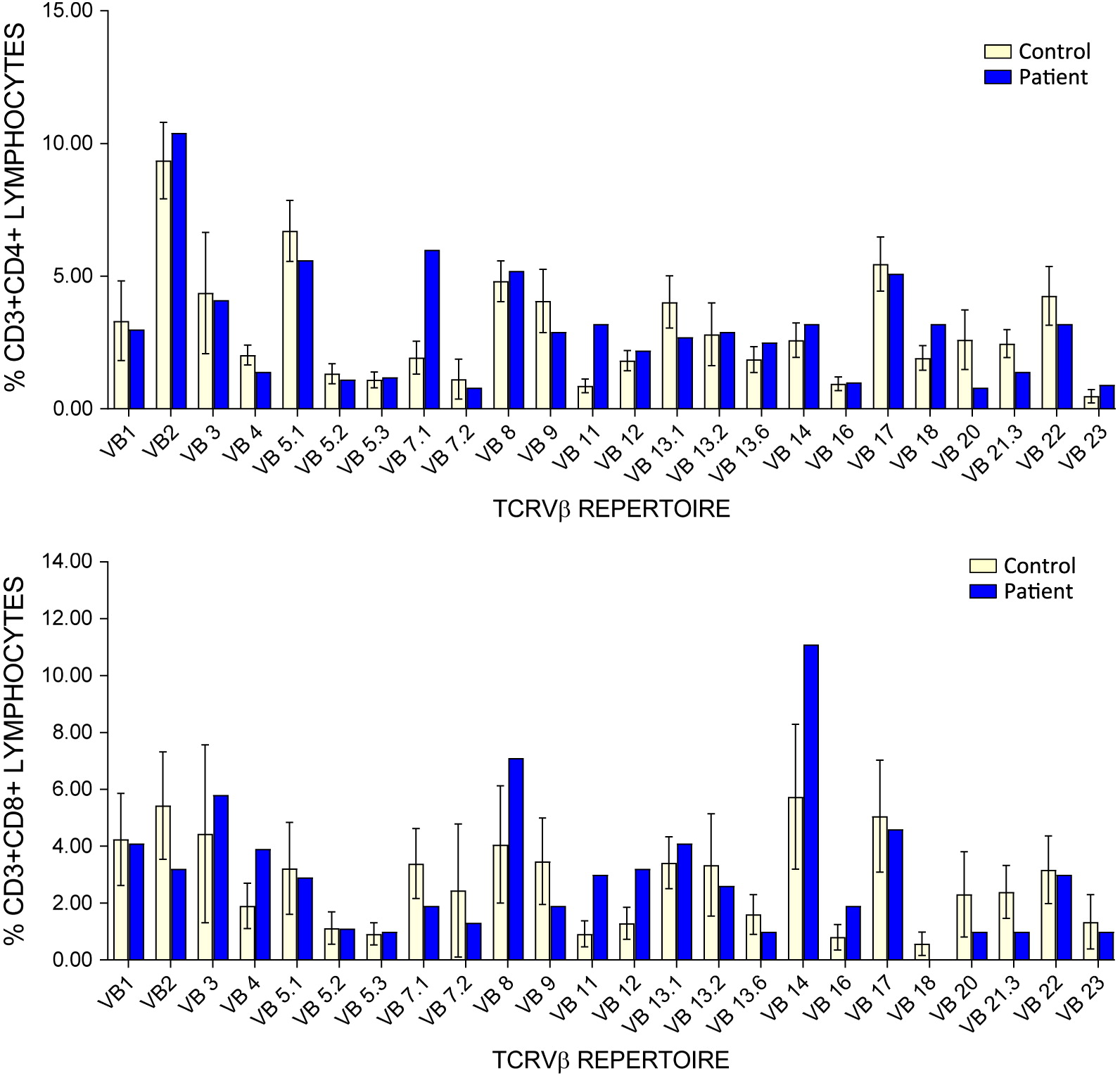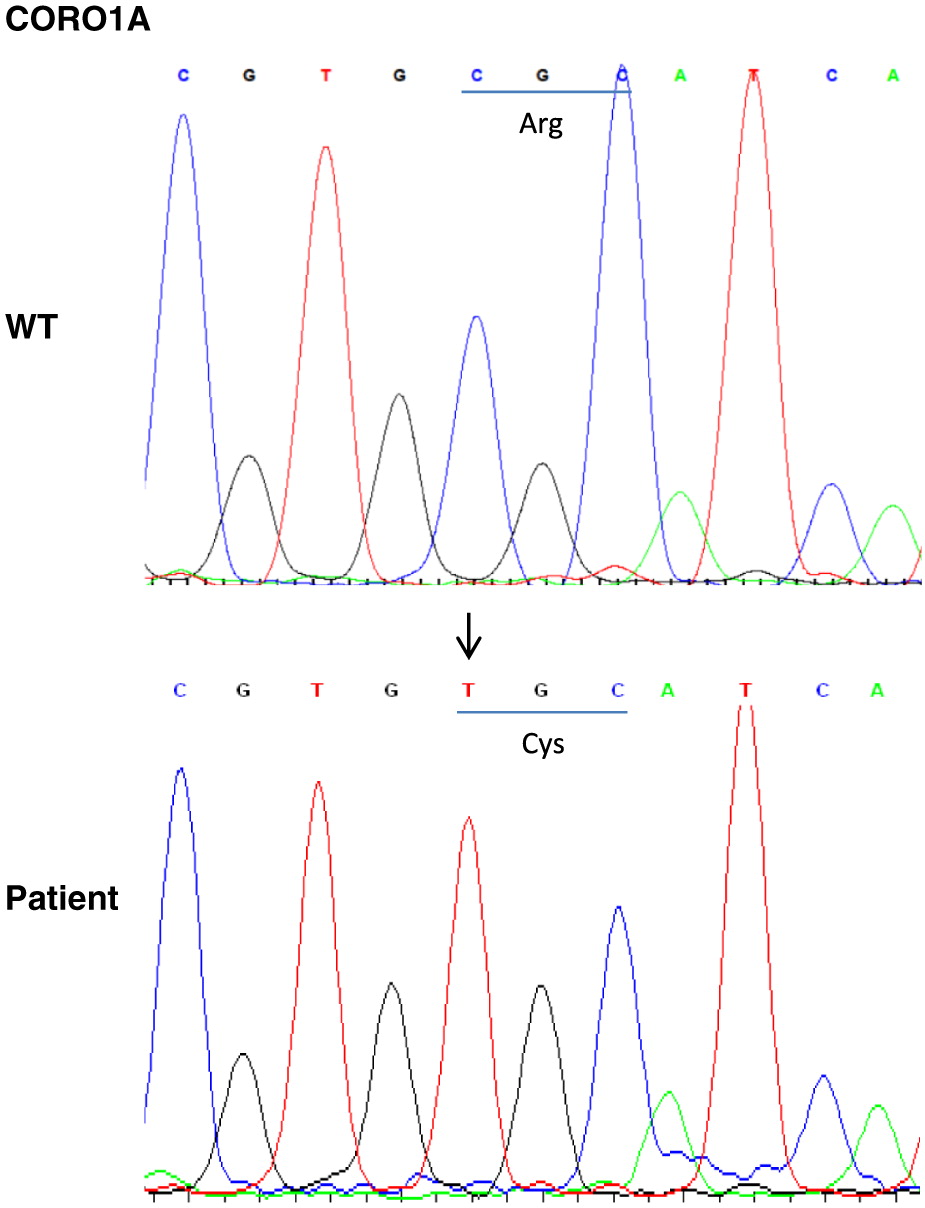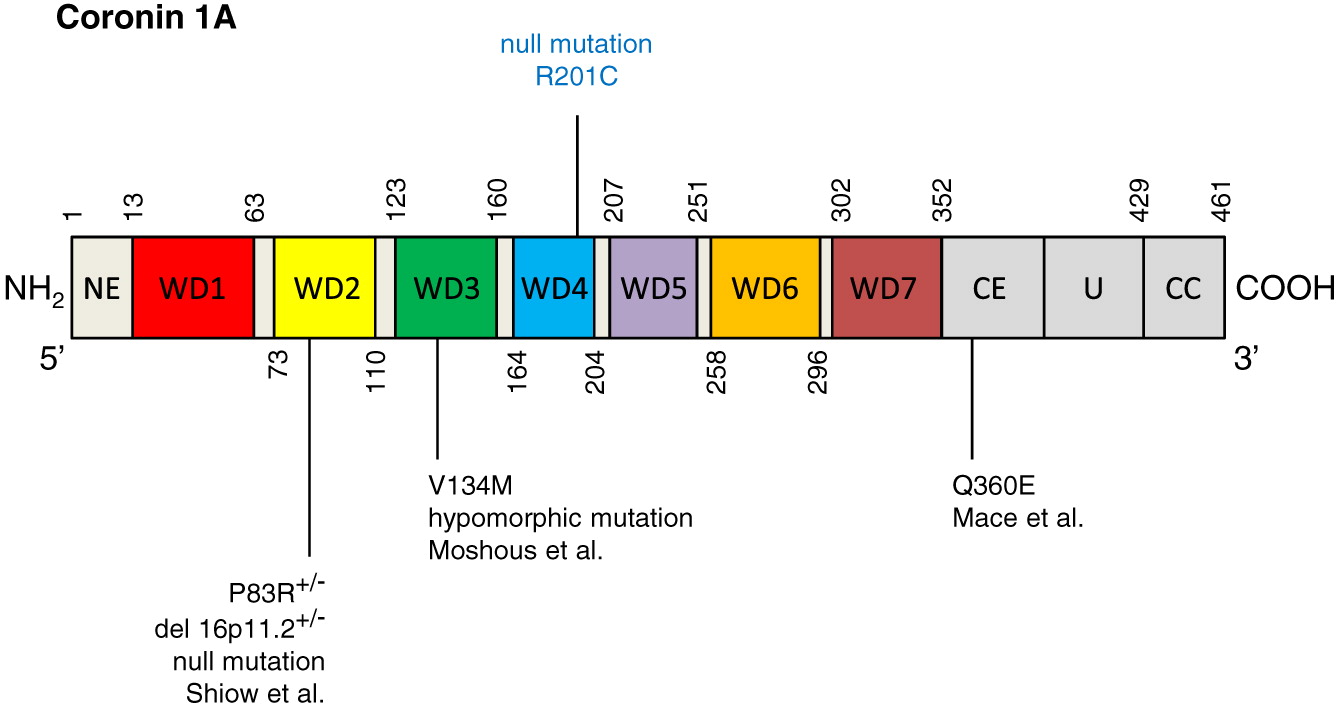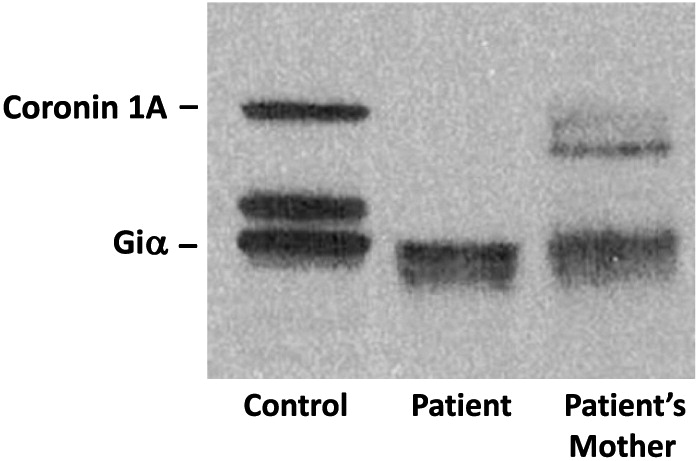Coronin 1A deficiency identified by newborn screening for severe combined immunodeficiency
Abstract
Background
Methods
Patient
Serum concentration of immunoglobulin and specific antibodies
T and B cell proliferative response
Exome sequencing and variant calling
Sequencing analysis
Western blotting
Case presentation
Clinical course
Immune evaluation


Genetic diagnosis



Discussion
Summary
REFERENCES
Information & Authors
Information
Published In

History
Copyright
Authors
Metrics & Citations
Metrics
Other Metrics
Citations
Cite As
Export Citations
If you have the appropriate software installed, you can download article citation data to the citation manager of your choice. Simply select your manager software from the list below and click Download.
Cited by
View Options
View options
Login options
Check if you access through your login credentials or your institution to get full access on this article.


